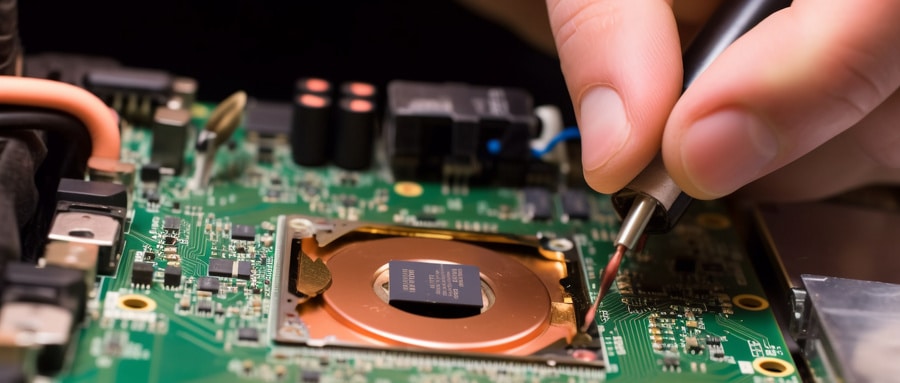Decoding the Intricacies of Metal Core PCB: A Comprehensive Guide
Metal Core Printed Circuit Boards (MCPCBs) have revolutionized electronics over recent decades. This guide seeks to illuminate their complexities, demystify their manufacturing process, demonstrate their wide application range, and show why this breakthrough holds such prominence in today’s technologically-driven society.
Chapter 1: Understanding Metal Core PCB
MCPCBs, also known as thermal PCBs, stand out among printed circuit boards because of their ability to dissipate heat efficiently. Traditional PCBs rely on non-thermally conductive dielectric material; but thermal PCBs address this limitation by including a thermally conductive dielectric layer for heat transfer.
Chapter 2: Manufacturing Process
Manufacturing an MCPCB involves several stages. First and foremost is selecting an ideal base material – aluminum and copper are two popular choices due to their superior thermal conductivity. Next step involves applying and structuring the thermal dielectric layer that provides electrical insulation and dissipation, before proceeding with circuit layer etching, solder mask application and surface finishing as per industry best practice – each process subjected to stringent quality checks to ensure performance and durability of PCBs.
Chapter 3: Diverse Applications
Metal core PCBs have quickly become the go-to choice across multiple industries due to their thermal management abilities, replacing traditional PCBs in applications ranging from LED lighting and automotive systems, power converters and IC boards – even renewable energy applications like solar panels and electric vehicles have come to rely on them as part of a sustainable future strategy.
Chapter 4: Benefits of Metal Core PCB
Investing in multilayer circuit boards (MCPCBs) offers many advantages. Chief among them is effective thermal dissipation that extends product lifespan and enhances performance, while robust manufacturing structures bestow high mechanical strength and stability. Furthermore, compact designs made possible through MCPCBs increase space efficiency.

Chapter 5: Future Trends
The potential of multilayer conductive polymer circuit boards (MCPCBs) for innovation within the electronics industry is considerable, especially as more devices require increased efficiencies of performance and energy conservation. With electrically powered devices, artificial intelligence, and IoT technologies becoming mainstream, MCPCB technology offers exciting prospects of advancement.
Metal Core PCBs have emerged as an innovative technological trend, revolutionizing both performance and durability of electronic devices. As demand for efficient, compact electronic components grows, Metal Core PCBs hold immense promise in meeting these challenges head on. Through this guide we hope that you have gained enough understanding of why Metal Core PCBs are an essential element in today’s technological landscape and are ready for this ongoing journey.
Keep this in mind as Metal Core PCB technology rapidly develops; keeping abreast of this development gives you an advantage in this intricate world of electronics.
FAQ:
- Q: What is a Metal Core PCB?
A: A Metal Core PCB (MCPCB) is a type of PCB that contains a metal base material. This base is designed to redirect heat away from components that generate a substantial amount of heat. - Q: What materials are commonly used in Metal Core PCBs?
A: The most common metal used is aluminum, but copper or a mix of special alloys can also be used depending on the requirements. - Q: What are the advantages of Metal Core PCBs?
A: The biggest advantage is their ability to effectively dissipilate heat, which can significantly improve the overall performance and lifespan of the PCB and its components. - Q: In which applications are Metal Core PCBs commonly used?
A: They’re commonly used in high-reliability applications like LEDs, automotive systems, and power converters due to their enhanced heat transfer abilities. - Q: How does a Metal Core PCB differ from a standard PCB?
A: While standard PCBs use a non-thermal substrate, MCPCBs use a metal core, typically aluminum or copper, to help dissipate heat. - Q: Can a Metal Core PCB be double-sided?
A: Yes, though more complex in manufacturing, you can have a double-sided MCPCB that has circuits on both sides and can even have components on both sides. - Q: What is the typical structure of a Metal Core PCB?
A: A typical MCPCB structure consists of a metal base layer, a dielectric insulation layer, and a circuit copper layer. - Q: Does using a Metal Core PCB eliminate the need for external heat sinks?
A: Often, yes. The metal core of the PCB serves to dissipate heat, which can minimize or eliminate the need for additional heat sinks. - Q: Are Metal Core PCBs more expensive than regular PCBs?
A: Generally, yes. MCPCBs are typically more expensive due to the cost of the material and the more complex manufacturing process. - Q: Do Metal Core PCBs have any limitations or drawbacks?
A: One potential drawback can be their weight due to the metal core. Additionally, cutting and modifying the board can be more difficult compared to traditional PCBs.























